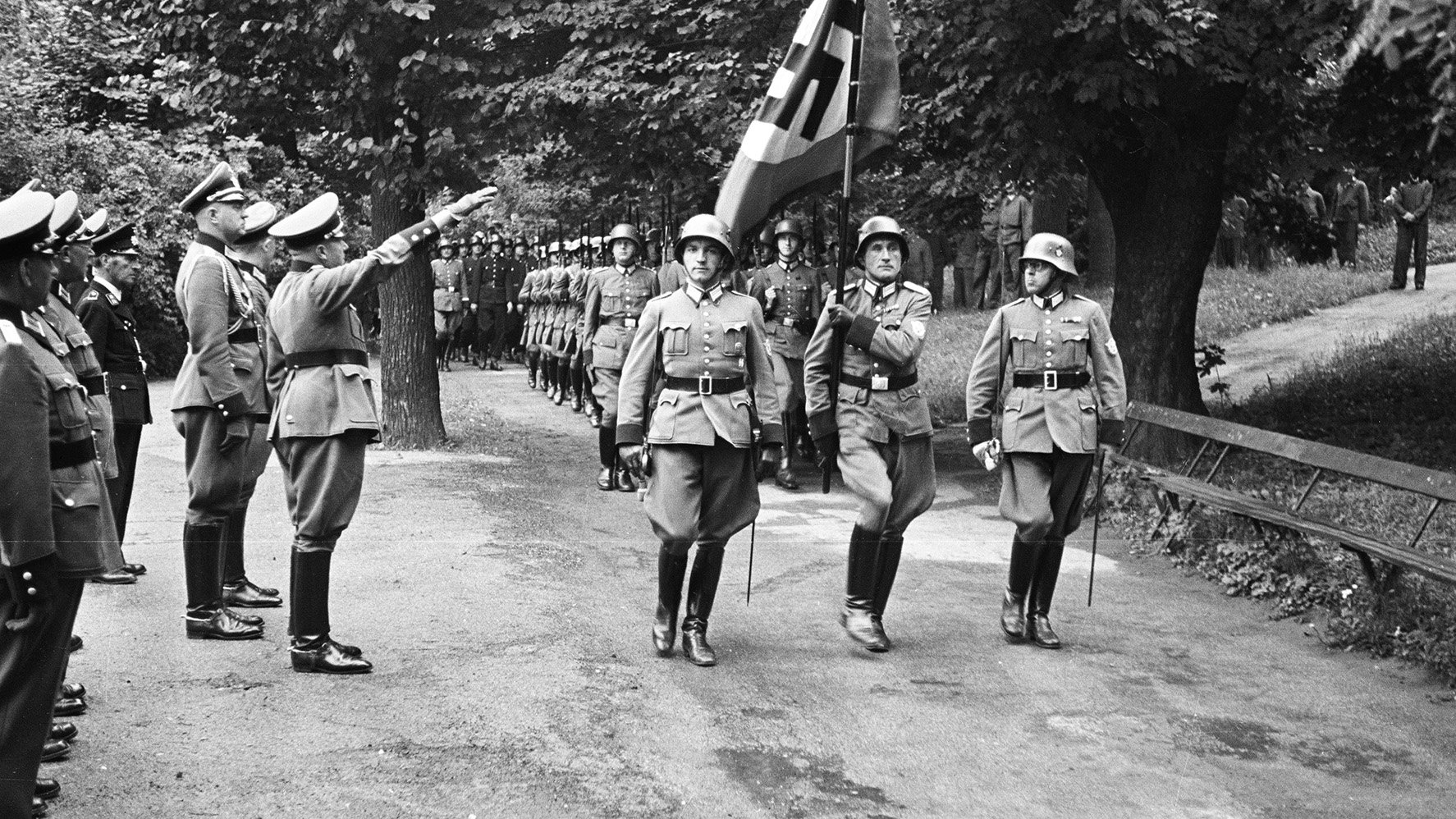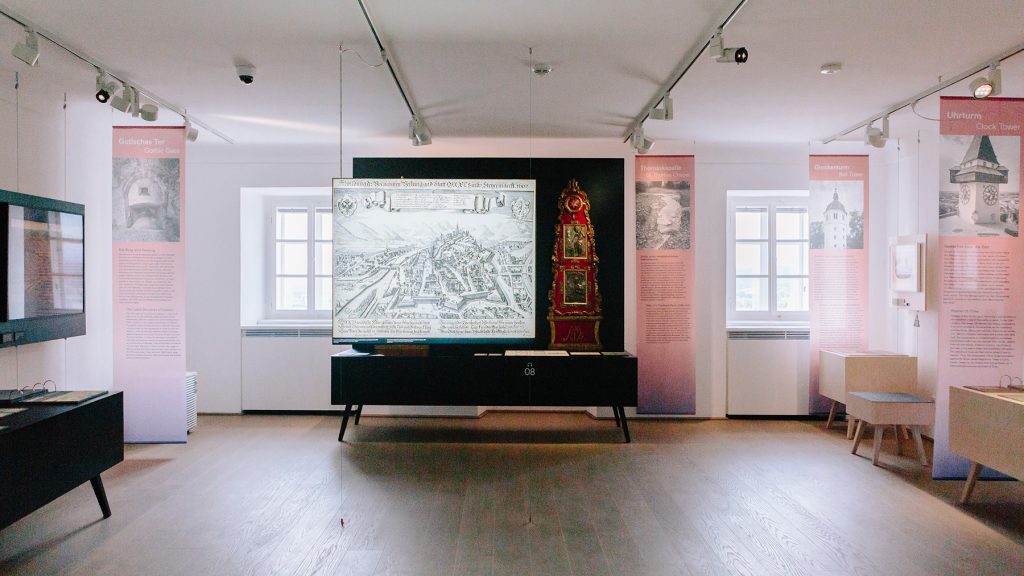
Polizeireserve Abschnitt-West after Swearing in for military use 1940, BMI/LPD
Hitler’s Executive
The Austrian Police and National Socialism
After World War II, mainly the victims of National Socialism in the police and gendarmerie were commemorated. Their own acts as perpetrators were long neglected.
Today we know that the police played a central role in enforcing and maintaining national-socialist rule. Its “order and security” was based on surveillance, repression, and terror. The police persecuted, imprisoned, and killed people whom the regime considered “opponents.” Among these people were also colleagues who belonged to other political camps, who resisted, or helped people in danger. Austrian police officers and gendarmes were significantly involved in the Holocaust—and frequently, they were not held accountable after the war.
The exhibition offers an overview of the organization, tasks, and ethos of the executive branch in National Socialism including the breaks and continuities before and after National Socialist rule. Based on biographies, it shows the fates that befell Austrian police officers and gendarmes and how they acted—from the fight for freedom to tyranny and murder.
The exhibition was expanded to include a separate section for the Graz Museum. In Graz, the “Stadt der Volkserhebung,” the infiltration of the police by National Socialist supporters became apparent early on. Immediately after the “Anschluss” the ideological conformity of the executive and ultimately the population through police violence began. Essential tasks, central locations and exemplary biographies of the Graz police during National Socialism are presented.
The exhibition was created as part of the research project “Die Polizei in Österreich. Brüche und Kontinuitäten 1938–1945”, initiated by the Federal Ministry of the Interior and carried out at the University of Graz/Ludwig Boltzmann Institut für Kriegsfolgenforschung in cooperation with the Dokumentationsarchiv des österreichischen Widerstandes and the Mauthausen Memorial.
It was funded by the Federal Ministry of the Interior and the Zukunftsfonds der Republik Österreich.
Project management and scientific support: Barbara Stelzl-Marx
Project management and curator: Martina Zerovnik
Project management Graz Museum: Franziska Schurig
Scientific advisory board: Christian Dürr (Mauthausen Memorial), Georg Hoffmann (Military History Museum), Claudia Kuretsidis-Haider (Documentation Archive of the Austrian Resistance), Betrand Perz (Institute for Contemporary History, University of Vienna), Christian Rapp (House of History, Museum of Lower Austria), Florian Schwanninger (Hartheim Castle Learning and Memorial Site), Barbara Staudinger (Jewish Museum Vienna), Florian Wenninger (Institute for Historical Social Research)
Project assistance: Nadjeschda Stoffers
Core team Uni Graz/BIK: Kurt Bauer, Harald Knoll, Philipp Lesiak, Simone Leski, Martina Schneid, Birgit Tauscheck, Richard Wallenstorfer
Team Federal Minisry of the Interior: Nicole Antal, Gerald Hesztera, Ulrike Landmann, Stephan Mlczoch, Mario Muigg, Eva-Marina Strauß (project management)
Executive historical and subject-specific support: Michael Beyrer, Thaddäus Dürr, Peter Hellensteiner, Walter Janča, Hubert Juen, Helmut Marban, Michael Masaniger, Walter Novotny, Hubert Sainitzer, Joachim Steinlechner, Harald Tomaschitz, Sabine Wagner
Exhibition design and graphics: BUERO41A / Thomas Untersweg, Christina Zettl


